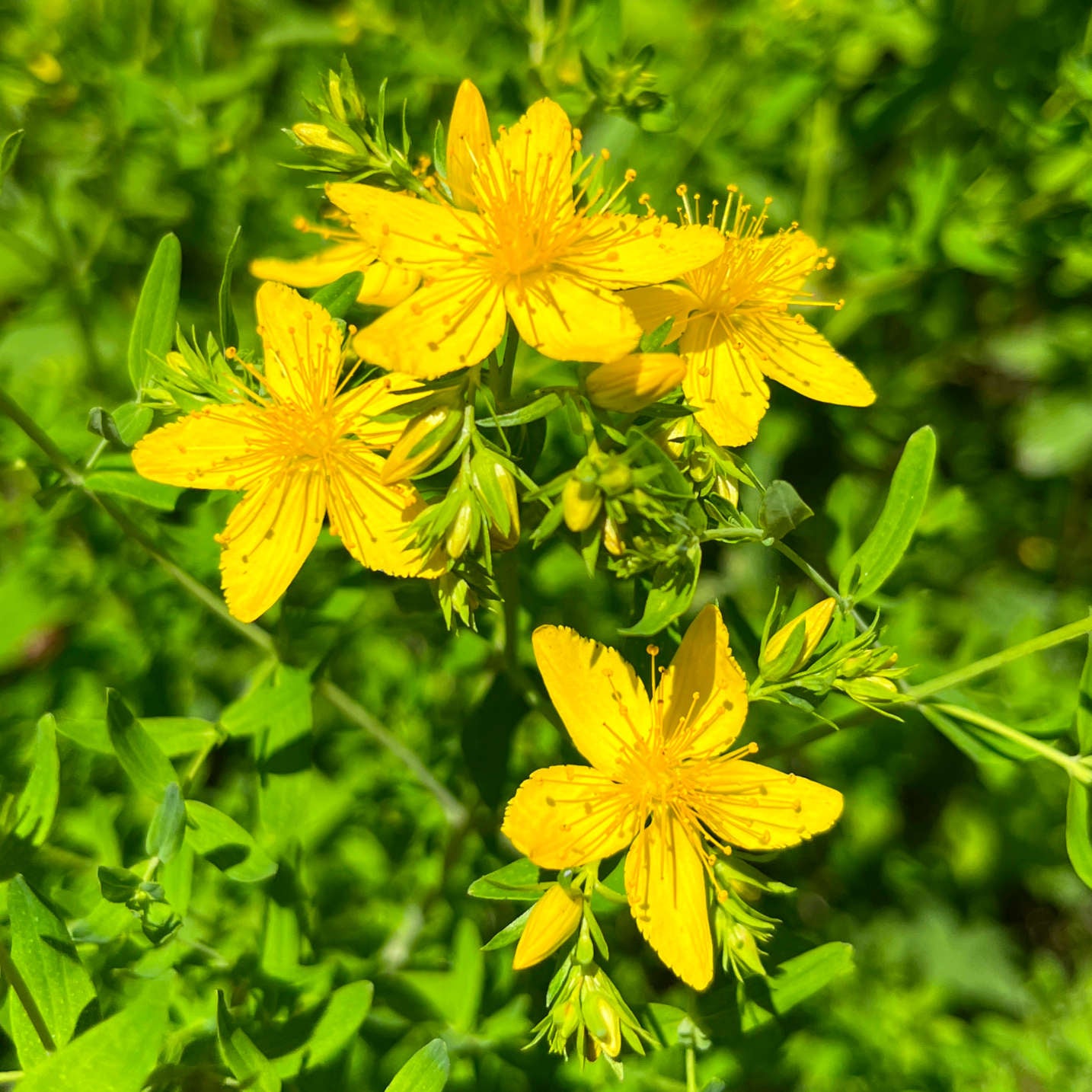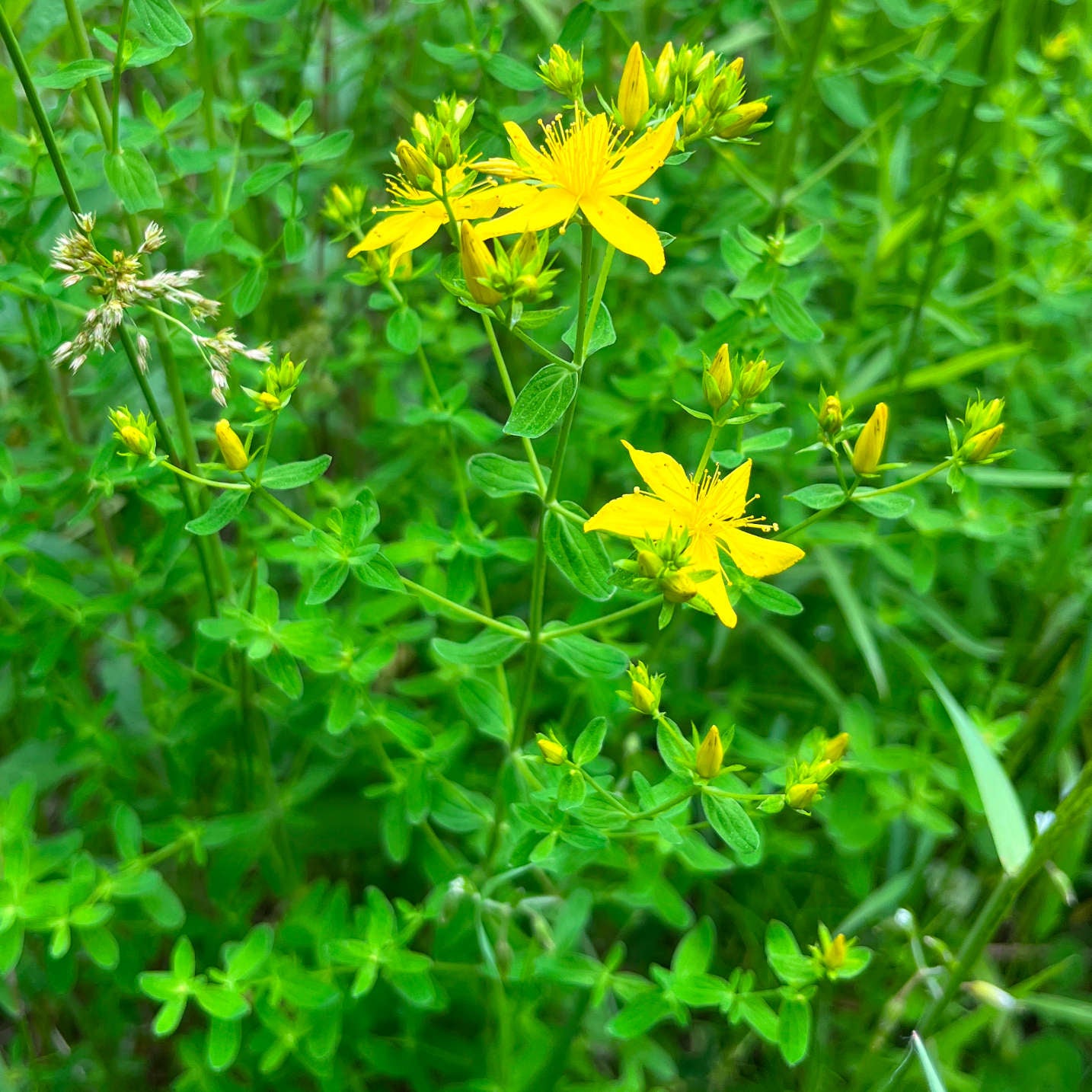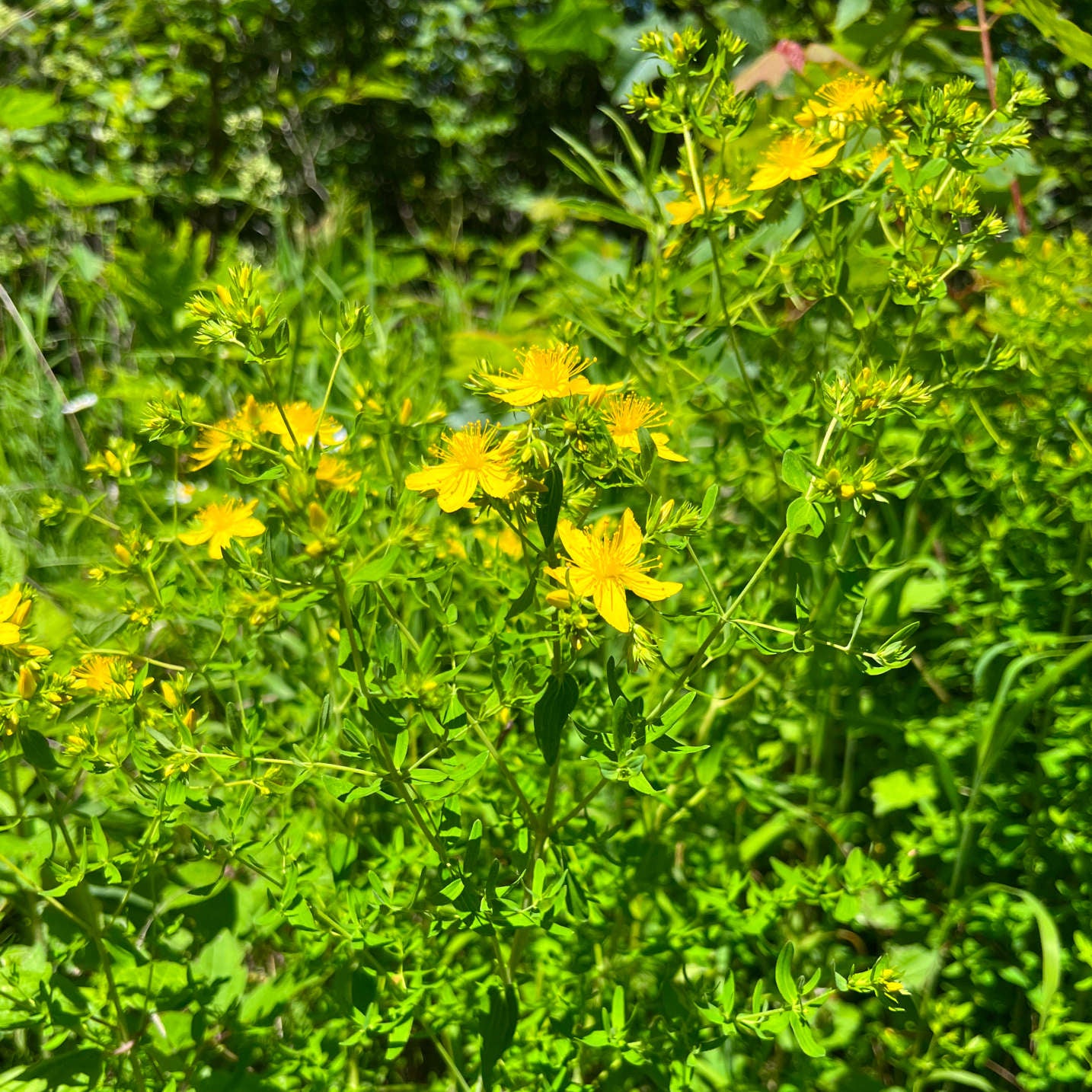For successful seedlings,
see the growing notes at the bottom of the page!
Common St. John's wort (Hypericum perforatum) is a perennial plant known for its profusion of bright yellow, star-shaped flowers with prominent stamens that bloom from June to August. The plant’s name comes from the tiny translucent glands on its leaves, which appear as small perforations when held up to light. Common St. John's wort thrives in well-drained, sunny locations but also tolerates partial shade, making it versatile for various garden settings. Its compact form and vibrant flowers add both colour and texture to naturalistic landscapes.
Medicinal and Culinary Uses
Common St. John's wort has a long history of medicinal use, particularly for its positive effects on the nervous system. It is known to be antidepressant, astringent, analgesic, antiviral, and anti-inflammatory. Typically taken as an infusion or tincture, it is used to treat mild anxiety, mild depression, and sleep issues. Externally, it helps soothe inflammation, burns, and minor cuts due to its healing properties. Note: Common St. John's wort may interact with certain medications, so it is recommended to consult a healthcare professional before use.
Ecological Roles
This plant attracts various pollinators, especially bees and butterflies, drawn to its abundant bright yellow flowers. Beyond supporting pollinators, common St. John's wort contributes to biodiversity in naturalistic gardens and can help stabilize lighter soils due to its adaptability to well-drained conditions. By cultivating it in gardens, one benefits from its medicinal and ornamental qualities while also supporting local ecosystems.
Akène cannot assume any responsibility for the use of plants for therapeutic purposes. Always seek advice from a professional before using a medicinal or edible plant.
Sowing and Growing
Technical Details
Seeds per packet: 300
Family: Hypericaceae
Scientific name: Hypericum perforatum
Life cycle: Perennial
Hardiness zone: 3
Soil type: Sandy to loamy
Soil moisture level: Dry to medium
Soil - additional attributes: Well-drained
Light: Sun, part shade
Blooming: June to August
Spacing: 45 cm
Height: 70 cm
Deer resistance: High
Stratification: No
Scarification: No
Germination time: 5 to 10 days
Sowing depth: Surface




